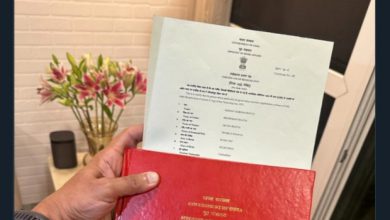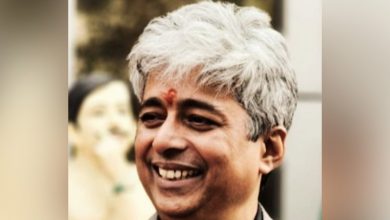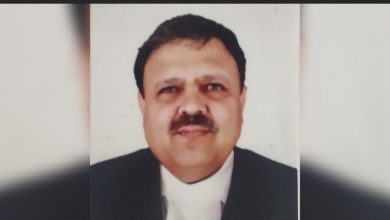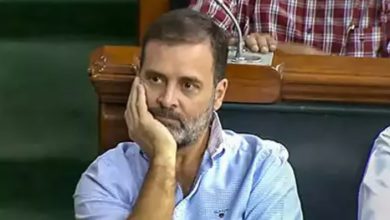Gujarat polls see least number of women candidates: BJP, Congress stand united in disdain for gender parity

The upcoming Gujarat state elections will go down with the dubious distinction of seeing the least number of women candidates. Gujarat has a population of over six crore, of which almost 48 percent comprise women voters. And yet, the BJP has fielded eleven women candidates while the Congress is one step behind, having fielded ten women candidates, for an Assembly strength of 182 seats.
We keep hearing slogans of ‘Bharat Mata’ and ‘Ganga Mata’ but when it comes to the crucial issue of men having to ensure that women receive a fair representation in politics, all parties seem to get stingy.
The question is why are political parties not nominating more women candidates? Is it because they lack the winnability factor? During the last state elections, former Gujarat chief minister Anandiben Patel contested and won from the Ghatlodiya constituency with a margin of more than 175,000 seats which was the highest in that election. So, obviously, women are in a position to even outperform men in politics.
BJP president Amit Shah conceded as much during a television debate that he would have liked to have given greater representation to women in the current elections. “We have given more seats than the Congress but when the issue of ticket distribution comes up then winnability becomes a key issue,” Shah told a television audience.
Some of the prominent BJP women candidates in the present elections are Geetaba Jadeja (Gondal), and Maltiben Maheshwari (Gandhidham). The party has retained four MLAs – Dr Nimaben Acharya (Bhuj), Sangeeta Patil (Limbayat), Vibhavariben Dave and Manisha Vakil (Vadodara city). Some of women candidates fielded by the Congress include Bhavna Patel (Navsari), Nitaben Rathod (Bhavnagar East) and Santok Arethia (Rapar).
Sonal Patel, Gujarat Congress chief of Mahila Morcha, regretted that while women in local self-government bodies had benefitted with 50 percent reservation, that was not the case when it came to state elections, especially when women suffered problems of resources, exposure and mobility.
Gujarat BJP Mahila Morcha chief Jyoti Pandya was not willing to say anything against the state high command, insisting the BJP had always given women a sizeable share in the power structure.
But another senior BJP woman leader, on condition of anonymity, stated: “While the BJP has given 33 percent reservation to women within the party organisation, there is no doubt that men enjoy a greater comfort level with other men. I have been in the party for the last 15 years and I have seen two things happen. One, when a woman is elected an MLA, the party finds it has to deal not only with her but also with her husband, father-in-law, father, brother and son. Most women come with this additional baggage. Even single women will have a boyfriend for the party to contend with and that makes the going tough. The other is that if a woman gets elected, she will not allow herself to be surrounded by a team of talented, attractive and well-educated women as she feels they will overshadow her. And in the long run, such an attitude goes against her.”
Dr Indira Hirway, director and professor of economics at the Center for Development Alternatives, Ahmedabad and one of the authors of the Gujarat Human Development Report 2004 is upset at the lack of women representation in both the political and economic affairs of the state.
“Gujarat remains an extremely patriarchal society where women are supposed to be inferior and subordinate to men. The BJP model of governance has only served to reinforce this, as can be seen in the fact that Gujarat’s sex ratio remains low while the issues of women’s health and employment continue to have a low priority with the state government,” said Dr Hirway.
“I keep asking the state government to evaluate the programs to see if they are reaching the grassroots women. To this, the reply of the officials is ‘(Narendra) Modi Saab hain to evaluation karne ki kya zaroorat hai? (When Modi sir is there then what’s the need for an evaluation?),”
“Important issues like the increasing levels of violence against women and their inability to register FIRs are things that need to be addressed,” Dr Hirway added.
Manjula Pradeep, the executive director of Navsarjan Trust, one of the largest Dalit rights organisations addressing the issues of caste and gender-based discrimination, seconded Dr Hirway’s opinion.
Pradeep undertook a study across 13 districts in Gujarat where 55,000 women were found to have died unnatural deaths (read burnt alive) but the police reported these as accidental deaths caused by stoves bursting. “Gujarat reports the highest number of such cases,” Pradeep said.
She also pointed out that after Tamil Nadu, Gujarat reported the second highest number of cases of domestic violence. It also had a large number of Dalit women being forced to do manual scavenging with the government doing little to end this practice.
Congress’ woman leader Ami Yagnik is in agreement with the fact that social indicators for women are getting lower and lower. “Gujarat was considered the safest state for women and now we are witnessing increasing numbers of rapes and gang rapes which is against our traditional culture,” said Yagnik.
Popular Gujarati fiction writer Kaajal Oza Vaidya believes the lack of women representation is only a reflection of the public’s indifference to politics. “People’s participation in politics is declining. Educated people simply do not want to join politics,” said Oza.
Women have been exempted from having to pay property registration charges if the property is in their name. The present chief minister, Vijay Rupani, has ensured that toilets be built in girl schools and the prime minister’s Ujjwala Yojana is aiming to ensure poor women are given access to gas cylinders to free them from cooking on wood fires. Camps have also been held in the state for free breast and cervical cancer check-ups for women, the leaders said.
Gujarati women take pride in how three key Cabinet portfolios – external affairs, defence and information and broadcasting – are with women. Many are conscious that legislative bodies like Bihar and Delhi have reserved one-third of the total seats for women. But as Dr Hirway pointed out, women have not been able to create a unified vote bank.
If they had succeeded in doing so, they would have emerged as a strong pressure group. Nor do they belong to any exclusive political class. They also face institutional hurdles like family and marriage, which can often thwart their attempts to assert themselves in politics.
Not only are women candidates missing in the political arena but issues that affect the day-to-day lives of women are also largely absent in the electoral battlefield. While political parties want women to vote in larger numbers, giving them political power is something the two main political parties of the country are obviously not interested in doing.







